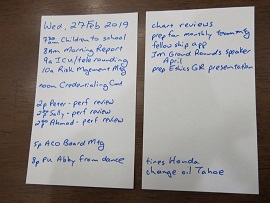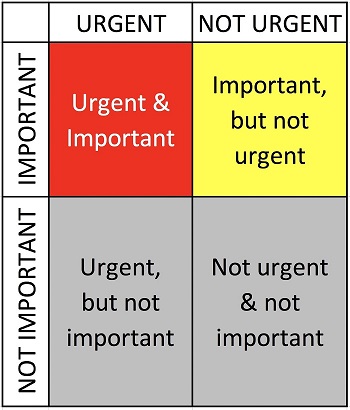
While in college, I agreed to meet someone at our church. No one else was at the building. It was 1:30 in the afternoon. I was able to let myself in, because I had a calling that required me to have a key. As I think back on it, I cannot remember who I was meeting or why; I just remember that this person stood me up. I sat for an hour in the foyer. Staring out at a gray, rainy sky, I thought, “What a miserable day!” I lived in Monroe, Louisiana where we would get a lot of rain. If every rainy day was a miserable day, I was going to have a lot of miserable days. I chose then to look for the beauty in that day. Everything looked clean and shiny from the standing water. I appreciated the different shades of gray. I saw bright sunlight peeking out through the clouds. I beheld that it really was a beautiful day, and my mood lightened considerably.
Frederick Longbridge said, “Two men look out through the same bars. One sees the mud and the other the stars.” Both are incarcerated. Both are in a bad place, yet one sees hope, and the other sees despair. One sees beauty and the other ugliness. Many people feel trapped in their lives, their work and their circumstances. They see so much of what is wrong and so little of the beauty that surrounds them.
The lens of seeing the good can be a powerful tool for anyone and especially for a leader. When we look for the good in people, we will find it. When those we lead know that we see good in them, they feel valued and respected. They want to prove that our faith in them is well-placed. They will often rise to meet our expectations. If we find concerns in their performance, we are able to weigh those concerns against all they bring to the table. We would not so blind our eyes to tolerate any kind of bad behavior. There must be accountability. Yet a strong tendency to look for the good is more likely to be right and to be effective in leadership than a strong tendency to look for the bad.
When we face great challenges in our organizations, we may see them as an opportunity to survive or perish. We should remember that the great men of history are made or revealed by the great challenges that have been thrust upon them or they have imposed upon themselves. Winston Churchill found his place in history because he was prime minister in England’s darkest hour and rose to meet the challenge.
In the movie, The Fellowship of the Ring, Frodo says: “I wish the Ring had never come to me. I wish none of this had happened.” Gandalf answers him saying, “So do all who live to see such times, but that is not for them to decide. All we have to decide is what to do with the time that is given to us. There are other forces at work in this world, Frodo, besides the will of evil.” Most organizations are faced with serious threats. We must not see these as our doom. These are beautiful opportunities to rise to greatness as leaders.
My own Christian faith is the source of my next thought on beauty. It occurs to me that Jesus Christ must see each of us as beautiful. I am certain that there are some expressions that He is not pleased to see, but I do not believe that He sees any of us is ugly. So, what makes us beautiful to Him? To answer that question, I want to take you to an assisted living facility in Rochester, New York.
It was the Christmas season. We had gone as a family to visit a beautiful, octogenarian couple we knew from church. We had with us three-year-old Abigail and infant Michael. Small children get a lot of attention in assisted living facilities. As we were leaving, we were invited into a public room that had the feel of a living room. In this exchange of laughter and joy, I captured with my camera a remarkable image of Abigail standing in front of a very old woman holding her chin with the tips of the fingers of her upturned hand. Each gazed on the other with a look of pure love. As I have studied the picture, it occurred to me that Abigail only saw beauty. I thought about all the grandparents and great-grandparents all over the world, many of whom are quite weathered and withered with age who are adored and are seen as beautiful by their perfect grand and great-grandchildren.
I am sure that you have known where I was going with this. We are seen as beautiful by Jesus Christ, because he loves us. This has caused me to realize that if I ever see someone as ugly, it tells me far more about where my heart is and should not be than it does about the other person. When we love people, they are beautiful to us.
So, a true understanding of beauty has brought us to love. The kind of love that I am speaking of is philia or brotherly (or sisterly) love. When we truly love, we cannot abuse. We seek the interests of others. We are as merciful as circumstances can allow. If hard choices must be made, we implement them as softly as possible. Love is one of the great and essential leadership qualities. Our ability to see beauty is a powerful indicator of our mastery of that love.
someone in their 80s
Connect with us on LinkedIn, join our Active Network Program and look at the other areas of connection we offer.
















